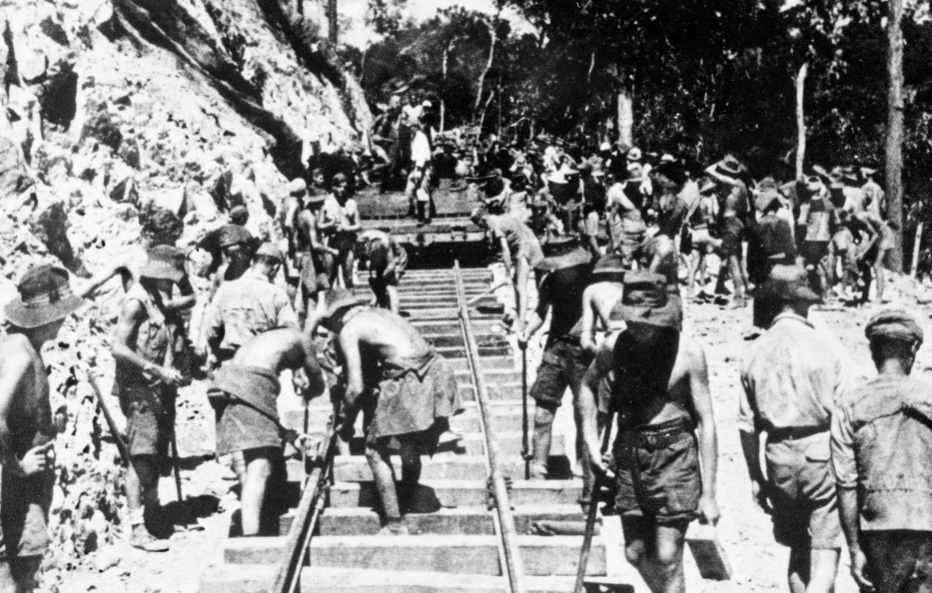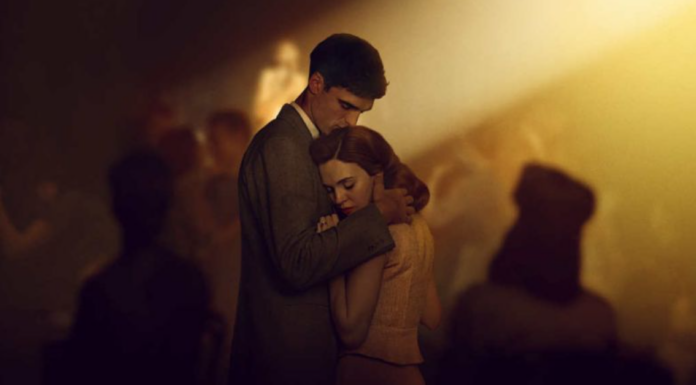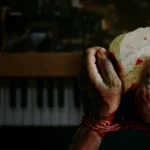The series THE NARROW ROAD TO THE DEEP NORTH doesn’t just grab your attention; it stays with you long after the credits roll. It has haunting visuals, a moving story, and a great performance from Jacob Elordi. This Australian limited series, which debuted on Prime Video on April 18, has already made waves around the world. It looks beautiful on the big screen, but the story is full of real pain, real history and real loss.
For viewers, one question looms large: Is THE NARROW ROAD TO THE DEEP NORTH based on a true story? The answer, like the show itself, is complex and layered. To understand its roots, we must first look at its powerful narrative.
WHAT IS THE NARROW ROAD TO THE DEEP NORTH ABOUT?

THE NARROW ROAD TO THE DEEP NORTH follows Lieutenant-Colonel Dorrigo Evans, played in his youth by Jacob Elordi and later by Ciarán Hinds, across three interwoven timelines—before, during, and after World War II. This five-part miniseries adapts Richard Flanagan’s Booker Prize-winning novel of the same name and just like the book, it refuses to sanitize the brutality of war or the complexities of love.
The story centers on Dorrigo, an Australian Army surgeon who is captured and imprisoned by the Japanese, forced to work on the infamous Burma-Thailand railway—often referred to as the Death Railway. Under impossible conditions, he becomes a leader and healer, bargaining with cruel guards to save his fellow prisoners. But in the darkest of places, Dorrigo’s internal light is sustained by memories of Amy Mulvaney (played by Odessa Young), a woman he had a passionate affair with before the war. The complication? Amy is married to his uncle, and Dorrigo himself is engaged to another woman, Ella, played in youth by Olivia DeJonge and in later years by Heather Mitchell.
Post-war, Dorrigo returns to Sydney and builds a life as a celebrated surgeon, outwardly successful but inwardly fractured. His past clings to him—his failure to reconnect with Amy, his regrets, and the ghosts of the men he could not save. A new affair with Lynette (played by Essie Davis), the wife of his colleague Rick Maison (played by Dan Wyllie adds another layer of emotional conflict.
Through searing flashbacks, disturbing wartime imagery, and bittersweet love scenes, the series doesn’t shy away from examining the toll of trauma, the weight of memory, and the impossibility of escaping oneself.
Is The Narrow Road to the Deep North Based on a True Story?
The Narrow Road to the Deep North is a work of fiction, but its roots are deeply entwined with historical events and personal experiences. Adapted from Richard Flanagan’s acclaimed novel, the series draws inspiration from the real-life horrors of the Burma-Thailand Railway and the lives of those who endured it. Below, we explore the historical and personal elements that shape the story, revealing how truth and fiction converge.
Flanagan’s father was a prisoner of war during World War II, captured by the Japanese and forced to work on the same Burma-Thailand Death Railway that is central to Dorrigo’s story. This personal family history drove Flanagan to write the novel over the course of more than a decade, eventually dedicating it to his father. The emotional weight of that dedication pulses through every frame of the series.
Director Justin Kurzel and screenwriter Shaun Grant, both of whom have family ties to wartime trauma, also drew from personal stories. Grant’s grandfather survived the Burma railway, while Kurzel’s grandfather fought with the Rats of Tobruk. Grant has said that writing the adaptation helped him understand his grandfather in ways he never had—especially since his grandfather rarely spoke of the war.
The emotional authenticity in the series is also reinforced by the dedication of its cast. Elordi and the other actors underwent a medically supervised boot camp in the Australian rainforest to realistically portray the emaciated, tortured condition of POWs. The physicality, the camaraderie, and the suffering were not phoned in—they were lived.
The Narrow Road to the Deep North: Is Dorrigo Evans Based on a Real Person?
Historical Context: The Burma-Thailand Railway

The Burma-Thailand Railway was a real and devastating chapter of World War II. Constructed by the Japanese Imperial Army between 1942 and 1943, the 415-kilometer railway connected Bangkok, Thailand, to Rangoon, Burma (now Yangon, Myanmar), to support Japan’s military campaigns. The project relied on forced labor, including over 60,000 Allied prisoners of war and approximately 200,000 Southeast Asian civilians, known as romusha. The conditions were horrific—workers faced starvation, disease, and brutal treatment, with inadequate food, medical care, and shelter. An estimated 12,000–16,000 Allied POWs, including 2,800 Australians, and up to 100,000 civilians perished during the railway’s construction, earning it the grim nickname “Death Railway.”
The series accurately captures the physical and psychological toll of this labor. Scenes of prisoners toiling in the jungle, battling cholera, and enduring beatings reflect documented accounts from survivors. The portrayal of Japanese and Korean guards, some sadistic and others conflicted, aligns with historical records that highlight the varied behaviors of captors. While the series focuses on the Australian POW experience, it acknowledges the broader suffering, though the novel faced criticism for not fully addressing the civilian deaths. Director Justin Kurzel defends this focus, noting that the story is told through Dorrigo’s perspective, a narrative choice that shapes its scope.
Inspiration from Sir Edward “Weary” Dunlop

Edward “Weary” Dunlop, an Australian Army doctor and hero of the Burma-Thailand Railway—is partly the inspiration for Dorrigo Evans. Another medical officer who became a prisoner of war was Dunlop. Like Dorrigo, he worked hard to take care of his fellow prisoners. He negotiated with Japanese officers to make things better, often putting himself in great danger, and he did surgeries that saved lives in very bad conditions. Because he was kind and strong, he became a legend, and many people admired him after the war.
Dorrigo has Dunlop’s leadership skills, medical knowledge, and ability to give people hope when things look hopeless. Dorrigo, on the other hand, is a character in a story; his flaws and personal problems are not the same as Dunlop’s. Dunlop was known for being humble and dedicated, but Dorrigo has problems with being selfish, cheating, and keeping emotional distance. Dorrigo is a compelling and likable character because he is both heroic and flawed. This gives the series a sense of how complicated people are.
The Stolen Girl: Rebecca Walsh Inspired by a Real-Life Kidnapper?
Fictional Elements: Love and Character Arcs
While the war scenes are grounded in history, the romantic and personal elements of Dorrigo’s life are largely fictional. His affair with Amy, his engagement to Ella, and his later affair with Lynette are narrative inventions, designed to explore themes of love, guilt, and moral ambiguity. These relationships add emotional depth, contrasting the brutality of war with the tenderness of human connection. The character of Major Nakamura, while inspired by historical accounts of Japanese officers, is also a fictional creation, offering a perspective on the war’s impact on the captors.
The series’ title, drawn from Matsuo Bashō’s 17th-century poetic travel diary Oku no Hosomichi (The Narrow Road to the Deep North), is a nod to Flanagan’s literary influences. It symbolizes Dorrigo’s inner journey, a path marked by suffering and self-discovery, rather than a literal historical reference.
CINEMATIC ADAPTATION AND ARTISTIC VISION
This series marks the first TV project for Kurzel and Grant, known for gritty films like Snowtown and Nitram. Their experience with true-crime and historical trauma is evident. The tone is raw and unflinching, the cinematography both stark and lyrical.
Notably, the series also makes changes from the novel to adapt better to screen. Characters like Uncle Keith (played by Simon Baker) and Major Nakamura are given more nuanced portrayals than in the book. These shifts help the audience understand the characters not just as plot devices, but as fully realized people caught in a brutal system.
The Making of the Series: Authenticity and Responsibility

To bring this story to life, the cast and crew undertook significant efforts to honor its historical roots. Jacob Elordi and his co-stars participated in a six-week boot camp in a rainforest south of Sydney, under medical supervision, to emulate the physical toll of captivity. This process fostered camaraderie among the actors, mirroring the bonds formed by POWs. Director Justin Kurzel and screenwriter Shaun Grant, both with personal connections to wartime history, approached the project with a sense of moral responsibility. Their previous works, such as Snowtown and Nitram, reflect a commitment to retelling difficult Australian stories with care.
The series’ adaptation makes some characters, like Keith and Nakamura, more sympathetic than in the novel, a choice Kurzel attributes to the visual nature of cinema. This humanization adds depth, allowing viewers to see the good and bad in every character. The result is a series that feels both historically grounded and emotionally resonant, a tribute to those who endured the railway’s horrors.
A FICTIONALIZED TRUE STORY
So, is THE NARROW ROAD TO THE DEEP NORTH based on a true story? Not exactly—but it’s as close as fiction can get. It is a tapestry woven from real events, real pain, and the collective memory of a generation that survived one of history’s darkest moments.
Dorrigo Evans may be fictional, but the world he occupies is very real. His story is a tribute to thousands who lived, loved, suffered, and died. And in bringing that story to life with such authenticity, this series offers something rare: a war drama that doesn’t just retell history—it makes you feel it.
Stay connected with tvacute.com for more updates, in-depth previews, and detailed recaps of THE NARROW ROAD TO THE DEEP NORTH and other compelling series.
The Girl Locked Upstairs: Where Is Tanya Kach’s Kidnapper Tom Hose Today?







